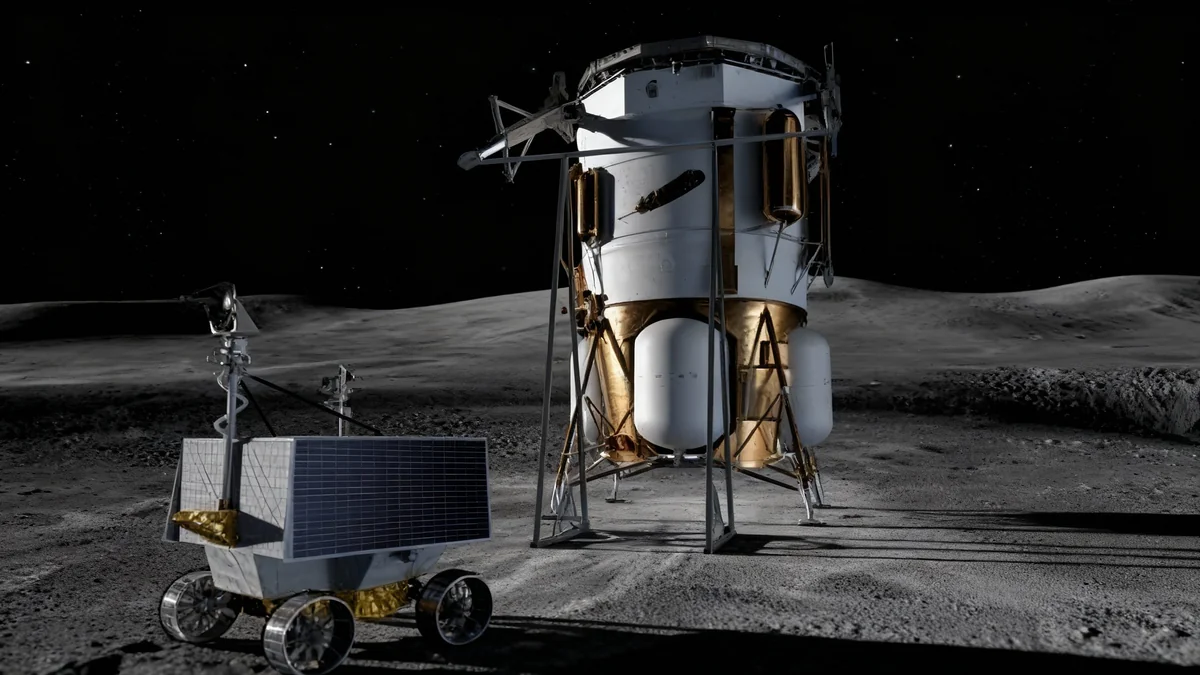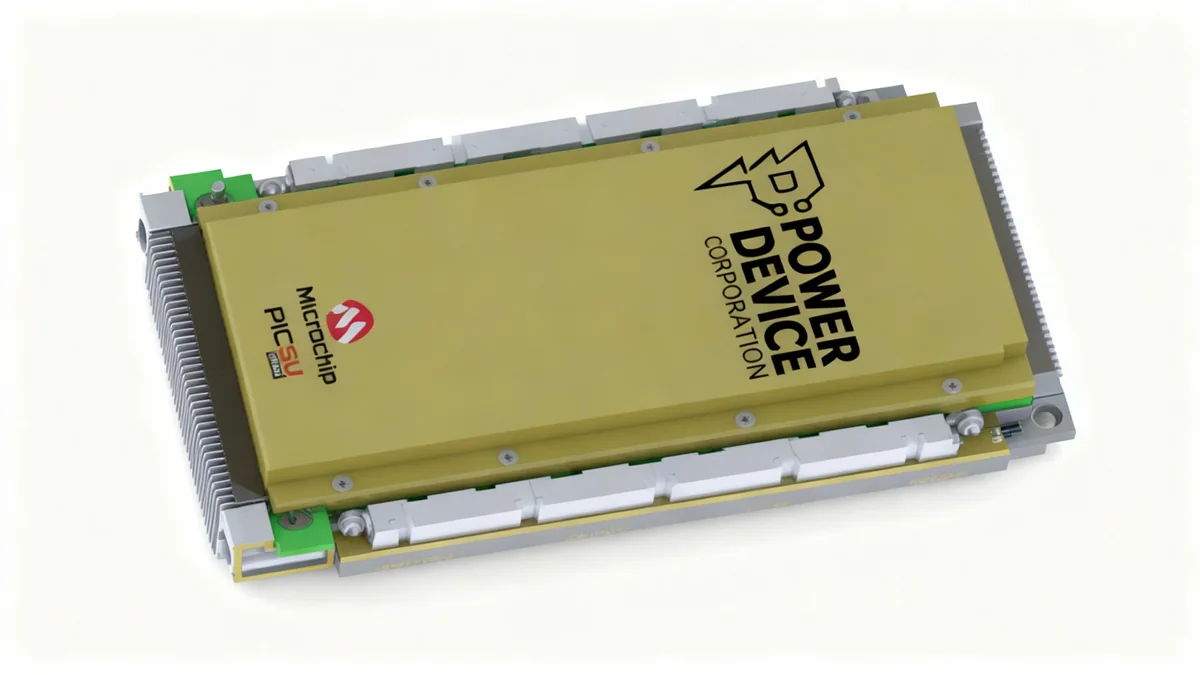Astrobotic Technology has adjusted the launch schedule for its Griffin-1 lunar lander, now targeting a launch no earlier than July 2026. The mission, which will carry a large commercial rover to the moon, was previously slated for a 2025 launch aboard a SpaceX Falcon Heavy rocket.
The Pittsburgh-based company confirmed the new timeline while providing updates on the lander's assembly and testing. This mission remains a key part of NASA's Commercial Lunar Payload Services (CLPS) initiative, despite a significant change in its original primary payload.
Key Takeaways
- The Griffin-1 lunar lander launch is now scheduled for no earlier than July 2026, a delay from its previous late 2025 target.
- The lander's primary payload is the FLIP rover, developed by Venturi Astrolab, which is currently undergoing space-simulation testing.
- The mission was originally contracted by NASA to deliver the VIPER rover, which was later reassigned to a Blue Origin lander launching in 2027.
- Astrobotic retains its NASA contract, valued at $322 million, to demonstrate the Griffin lander's capabilities.
Assembly and Testing Underway
While a specific reason for the schedule adjustment was not provided, Astrobotic indicated that significant progress is being made on the lander. The assembly of the Griffin-1 vehicle is ongoing, and crucial pre-flight testing has yet to be completed.
A key focus is the lander's propulsion system. The company reported that qualification testing for the lander's engines is currently in progress. These tests are vital to ensure the engines can perform the complex maneuvers required for a soft landing on the lunar surface.
"With engine qualification testing underway and critical systems coming online, Griffin-1 is advancing toward the moon," the company stated.
This phase of development involves subjecting components to harsh, space-like conditions to identify and resolve any potential issues before the lander is fully integrated for its journey.
A New Primary Payload Takes Center Stage
The largest payload set to fly on Griffin-1 is the FLEX Lunar Innovation Platform, or FLIP rover, built by Venturi Astrolab. This commercial rover is also advancing through its own rigorous testing regimen. Recently, Astrolab initiated a two-week thermal vacuum test campaign to simulate the extreme temperatures and vacuum of space, ensuring the rover's systems can withstand the lunar environment.
In addition to the FLIP rover, Griffin-1 will transport several other payloads to the Moon. These include:
- CubeRover-1: A smaller rover developed by Astrobotic itself. While acceptance testing was completed earlier this year, software integration with Canadian company Mission Control is still in progress.
- Nippon Travel Agency Plaque: A commemorative plaque from the Japanese travel agency.
- Nanofiche Disc: A disc containing a library of documents.
- MoonBox: A capsule containing a collection of small personal artifacts.
The CLPS Initiative
NASA's Commercial Lunar Payload Services (CLPS) program is designed to contract with private American companies to deliver science and technology payloads to the lunar surface. The goal is to foster a commercial space economy while supporting the agency's Artemis program objectives. Astrobotic is one of several companies with contracts under this initiative.
The Mission After VIPER
The Griffin-1 mission has undergone a significant evolution. Its original, high-profile task was to deliver NASA's Volatiles Investigating Polar Exploration Rover (VIPER) to the lunar south pole. This mission was part of a CLPS task order awarded to Astrobotic valued at $322 million.
However, in July 2024, NASA announced it was canceling VIPER's flight on Griffin-1. The decision was driven by rising costs and anticipated delays that would have pushed the launch beyond its planned November 2025 date. Despite removing the rover, NASA opted to retain the task order with Astrobotic, repurposing the mission as a demonstration of the large lander's capabilities.
This decision underscores the importance of the Griffin platform for future lunar logistics, as it is one of the largest commercial landers currently in development.
A Tale of Two Contracts
- Astrobotic: Retained a $322 million NASA contract to fly the Griffin-1 lander as a technology demonstration mission.
- Blue Origin: Awarded a new $190 million NASA contract to deliver the revived VIPER rover to the Moon in late 2027.
NASA Revives Rover with New Partner
After evaluating its options, NASA revived the VIPER mission. On September 19, the agency announced it had awarded a new CLPS task order to Blue Origin. The Jeff Bezos-founded company will now be responsible for delivering the fully assembled VIPER rover to the Moon's south pole.
The mission will use Blue Origin's second Blue Moon Mark 1 lander, with a launch target of late 2027. The contract is valued at $190 million and is contingent upon the successful landing of the first Blue Moon Mark 1 mission, which is expected to launch in the coming months.
Astrobotic confirmed that it did not bid for the new VIPER delivery contract. The company cited the compressed timeline for the proposal and its existing commitments to customers for the Griffin-1 mission. NASA later revealed that Blue Origin was the only company to submit a bid for the revived mission.
Even with its revised schedule, Astrobotic's Griffin-1 is still positioned to launch more than a year before the Blue Origin mission carrying its former payload, marking a critical step in the race to build a sustainable commercial presence on the Moon.





